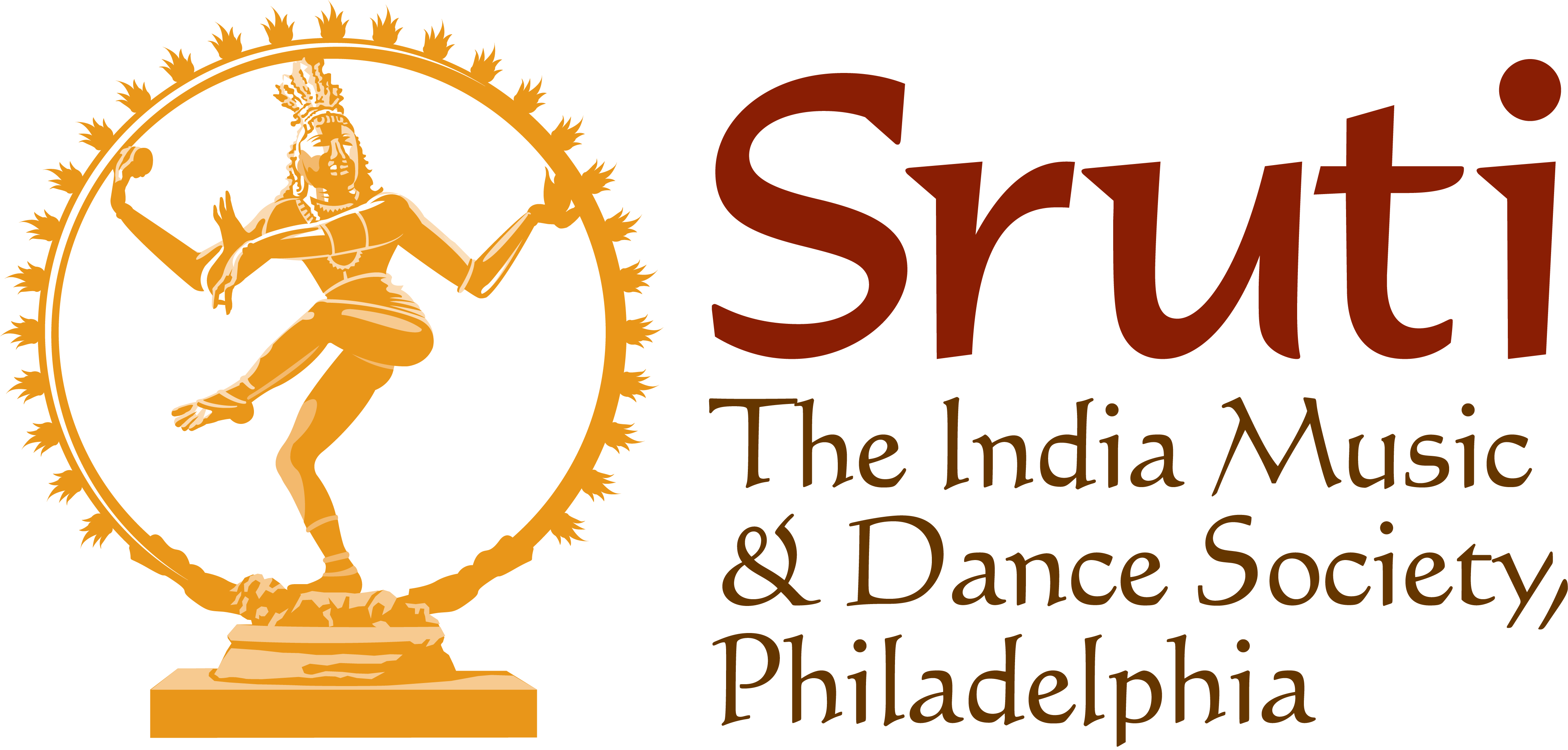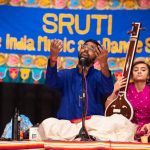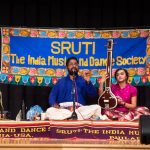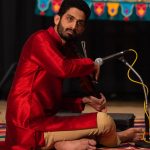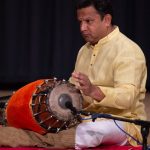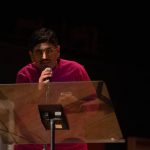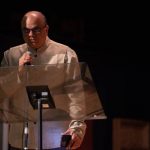Your cart is currently empty!
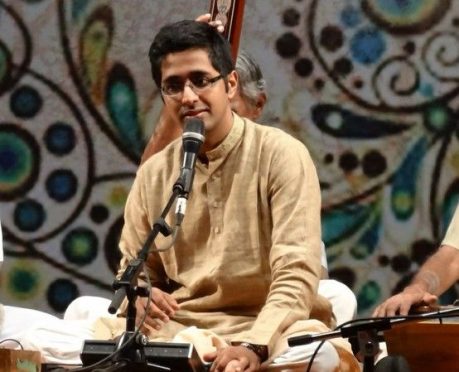
Carnatic Vocal Concert
By Abhishek Raghuram
Saturday, April 15, 2023 | 4:30 PM
Fugett Middle School Auditorium
500 Ellis Lane
West Chester, PA 19380
About This Event
Abhishek Raghuram is an Indian musician, composer, and singer. As a performer, he has earned critical acclaim from all corners for his mastery over content, control and technical excellence. As an artist, he is an explorer whose unique blend of physicality and firm rooting in traditional composition takes the listeners through a deep and thought provoking journey into the wide tapestry of Carnatic music. His reverence for compositions coupled with his bold and thought provoking interpretation of source material make his performances an intellectual and emotional journey for the listener. Primal yet polished. Subtle and layered, Abhishek wears his love for music on his sleeve and is audible in his searing voice that cuts across genres and has resonated in venues across India and the world.
His musical roots are deep, diverse and stem from a childhood steeped in process, understanding and dissection. “I listened with great curiosity, to all the sounds that nurtured me from childhood. My Mother Usha’s music, the sounds that emanated from the mridangam of my Grandfather, Shri Palakkad Raghu created in me, an awe for the content, the structure, and gave me the wings to fly endlessly. The musical honing of Guru Shri PSN grounded me time and again to surrender, and search relentlessly for more. What I love most is Sadhana, to engage in relentless pursuit, day after day, and the gems, in the infiniteness between notes never fail to show up, to shine, whether I search through my voice, my mridangam, the gems that shape my thoughts, that stir my inner being “
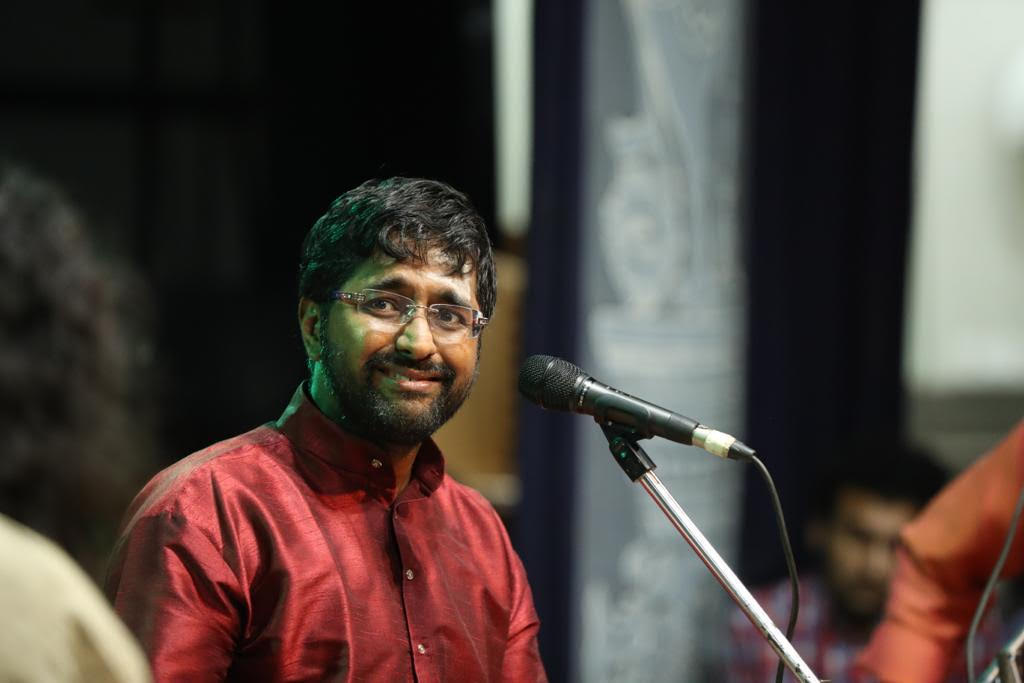
Mysore Karthik Nagaraj, son and disciple of violinist Mysore M Nagaraj and nephew of Sangeeta Ratna Mysore Manjunath, is a well-known violinist who made a mark in the Carnatic music industry at a young age. Playing violin since the age of eight, Karthik has emerged as a promising violinist in the realm of Carnatic Music, making rapid progress with his musical acumen, prowess and technical virtuosity. He is among the youngest musicians in India to be awarded “A” grade from All India Radio and Doordarshan. Karthik, who is associated with percussion ensemble ‘Layatharanga’ and Carnatic jazz group ‘Saagara’, has toured and performed in various countries like Qatar, Denmark and Germany.
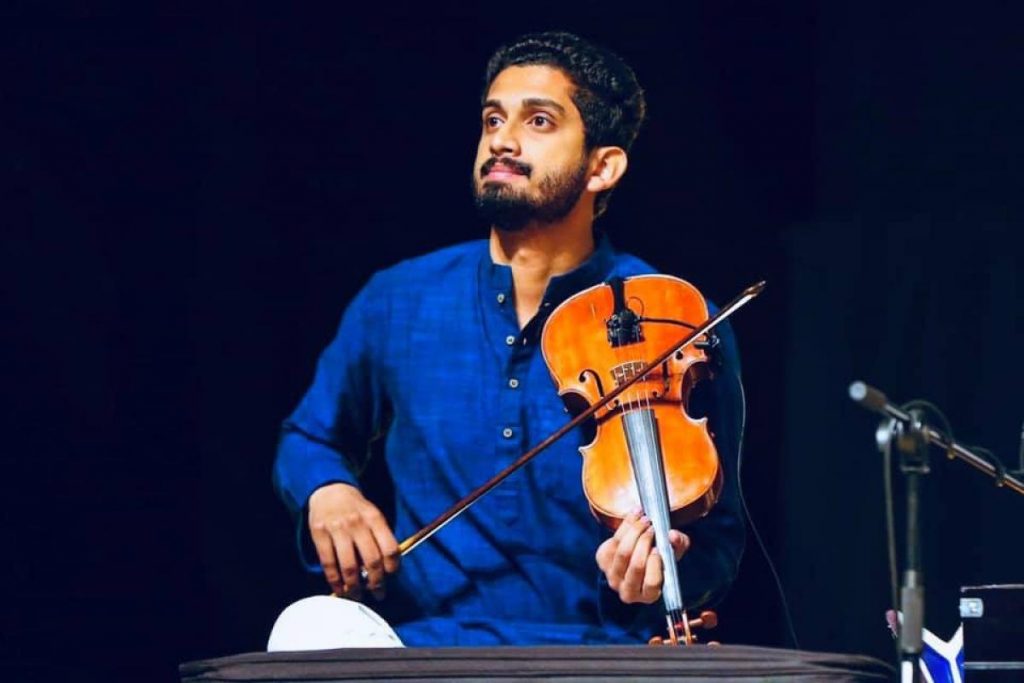
Bangalore Arjun Kumar is among the most respected Mridangam artistes of today. Born in a family of Mridangam artistes, Arjun Kumar was initiated into the art of Mridangam playing at the young age of five by his father Sri Arjunan, who is one of the very senior artistes in the field of percussion and was later mentored by Sri T. A. S. Mani for a couple of years. He then came under the tutelage of the mridangam legend, Padmavibhushan Sangeetha Kalanidhi Dr. Umayalpuram K. Sivaraman.
He has enthralled music lovers over the past four decades with his inimitable style, novelty, fine aesthetics and precision in creating unabated rhythm patterns through his Mridangam. He has been accompanying three generations of leading musicians and has performed in all the leading organisations, sabhas, music conferences and cultural festivals of India and across the globe. He is also the recipient of several awards and honors.
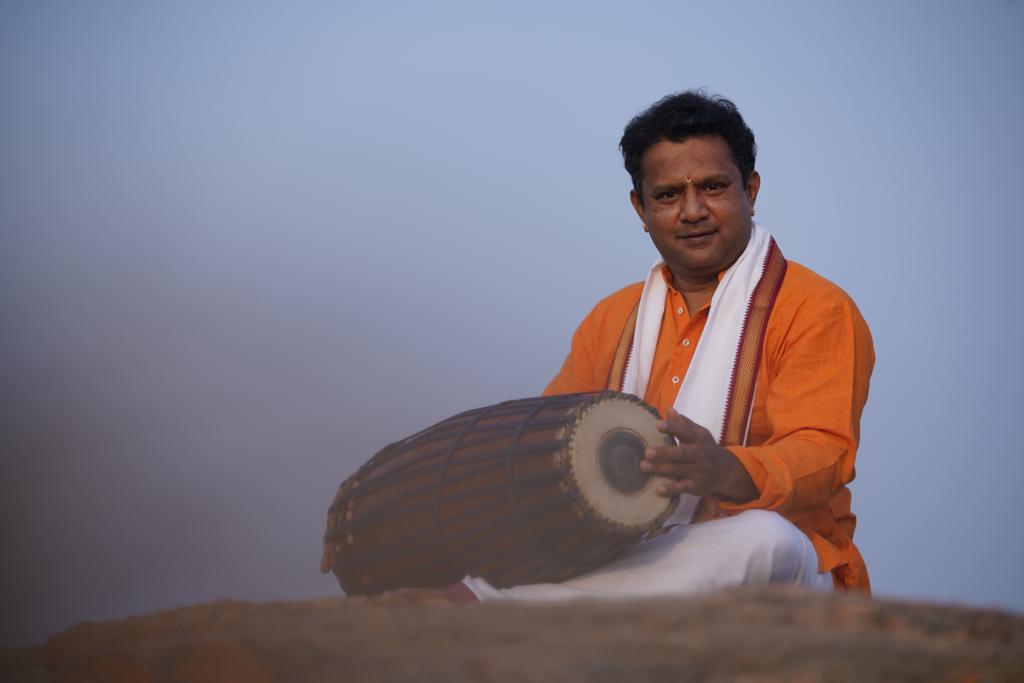
Concert Review
A razzle – dazzle by Abhishek – Karthik – Arjun Kumar
By Jayram Sataluri
Live at Fugett Middle School, West Chester, PA (April 15th, 2023)
Abhishek Raghuram- vocal
Mysore Karthik Nagaraj- violin
Bangalore Arjun Kumar- mridangam
Rasika Sivakumar- tambura
Duration: 3 hours 24 mins
Audience: at least 100 people
1) sarasUDa ninnE kOri (varNam)- sAvEri, Adi, kothavAsal vEnkatarAmayya
2) nAdatanum aniSam- cittaranjani, Adi, tyAgarAja
3) shrI ramaNa vibhO- Arabhi, Adi, swAti tirunAL
4) sarva lOka dayA nidhE- husEni, rUpakaM, tyAgarAja
5) yadukula tilaka enduku nirdaya- cakravAkam, Adi (2 kalai), garbhapurivAsa (Karur Krishna Iyer aka Cinna DEvuDuKrishniah & Dakshinamurthy Sastri)
6) nanganallUr ezhundaruL- Anandabhairavi, Adi, pApanAsam Sivan
7) ETi janmam(i)di hA- varALi, miSra cApu, tyAgarAja
8) nATTai kurinji RTP (muralIdharA manOhara shrIdhara/shrIkara karunAkarA murahara moralinarA) w/ rAgamAlika (hindOLam, sAramati)- Adi (khanda Nadai) later Eka
9) kApi madhuripuNA (Ashtapadi)- kApi, Adi, JayadEva
10) Sri rAmacandra krpAlu bhajumana- yaman kalyAN, miSra cApu, TulsidAs
When Sruti announced that Abhishek Raghuram would be performing after over a decade, I knew I had to be there. This was my 4th time seeing him live after the Spring 1999 New Jersey, Fall 2017 Atlanta (with HN Bhaskar and Patri Satish Kumar) and Fall 2019 New Jersey (with HN Bhaskar and Arjun Kumar). Alongside him was Karthik Nagaraj (violin) and Arjun Kumar (mridangam).
After the brief intros of the artistes by Balaji Ragothaman, Abhishek immediately went to his trademark mandra sthAyi to quickly warm up. Then he sang a snippet of sAvEri before commencing with the famous varNam. He mostly sang it in the usual way I have heard other singers have rendered, but he did put his own spin on it whether it was him singing a few interludes or highlighting other notes. Yet the loud sound system prevented me from appreciating it fully. Abhishek noticed it too and afterwards, he asked the sound man to adjust it.
After the sound lowered to acceptable levels where Abhishek hummed his mandra sthAyi, he gave a brief alapana of cittaranjani and sang nAdatanum aniSam. I was pleased that he split the sahitya “nAdatanum aniSam Shankaram” and sang the swarAkshas the way BMK would do it. Other than that, it was rendered the usual traditional way. It would have been great if he had sung swarams, but luckily, he didn’t sing it as a filler either.
Next was Arabhi and here Abhishek shot out like a rocket. He was in gleeful experimental form where he explored every nook and cranny of Arabhi, revealing unheard dimensions of the rAgam. Though I could hear some hoarseness in his voice, his trademark brigas were in great display in the tAra sthAyi. Karthik was having trouble keeping up, but played a good Mysore-esque response. Abhishek took over and did another alapana in tAra sthAyi, desiring to bring out more new shades. Then he came back down to madhya sthAyi and sang “shrI ramaNa vibhO”, one of my favorite SwAti tirunAL krithis as popularized by BMK. He had sung in the 2019 New Jersey concert and it was great to hear it once more. He channeled the spirit of BMK while making his own mark on it. What I liked was that he sang the first charanam, “bhAla lOcana tAmarasAsana..” which I haven’t heard anyone render so far. After returning to the Pallavi, he then sang the famous “rAma sOdara durita samUha..” charanam and launched into swaraprastara where his mathematical brain came to the forefront. As he is one of the best in swaraprastara today, everyone paid rapt attention, eager to hear what his manodharma was going to conjure each time. After 5 to 10 minutes of splendid swarams spouting out of him, he took a break to catch his breath and drink water while Karthik played the charanam notes and Arjun Kumar maintained the kAlapramAna. He joined back, singing the entire charanam in one go and finished SwAti tirunAL’s piece on a high.
After that attractive Arabhi, he sang a brief husEni where he did a BMK “R2G2M1R2G2S R2N2S”, then started the song at the anupallavi. I wish he had sung the full krithi; other than the Pallavi and anupallavi, he sang the 4th and last charanams. He did his usual “aa” interludes whenever he felt like it.
After tuning the tambura for over a minute, he launched into cakravAkam. And if you asked others if they ever heard cakravAkam rendered like how he did it, they would reply in unison “Absolutely not!” He simply let his mind run loose. It was like a roller coaster ride with so many ups and downs and twists and turns. Like Arabhi, he did not miss anything in the rAgam; every swara note was explored 110%. Then during the middle, he took off his glasses and took us to a divine plane. He did go off tune once in tAra sthAyi, but his brigas just blew us away. Every time he did something new and breathtaking, the audience couldn’t control themselves from clapping spontaneously. You could hear “sabaash”, “balE”, “aa” and “tchu tchu” not just from audience members but Abhishek himself as he was completely taken in by cakravAkam. The final applause that came after Abhishek finishing in madhya sthAyi must have lasted nearly 30 seconds! Karthik had a lot of ground to cover, but the Mysore bAni came alive in him throughout. His posture and bowing were an exact replica of his father. When he played one string bowing during the faster portions, it brought back memories of hearing his father and uncle. Abhishek lauded him for his performance.
Then Abhishek sang a rare krithi I was hearing for the first time, “yadukula tilaka enduku nirdaya”. I later discovered it was popularized by the SSI bAni. One could find similarities between this krithi and TyAgarAja’s Enduku Nirdaya in Harikambhoji in terms of the krithi structure and sahitya. Perhaps this was GarbhapurivAsa’s tribute to TyAgarAja. But Abhishek disappointed me when he sang “enduku” as “endugu” and slurred at some points during the rendition. This was a result of his musical mind taking precedence over the sahitya and the bhAvam was not as deep as it should have been during the Pallavi and anupallavi. Yet he rebounded from that “mishap” when he started rendering the neraval line at the beginning of the charanam “vara muninuta pAda vAncita phalaprada” and from there it became another display of astonishing aptitude. Arjun Kumar who had simply been maintaining the kAlapramAna during the first hour, came alive and played terrific theermanams complementing the rock star. The swaraprastara that followed was a different beast altogether. Abhishek was on fire; the longer swaraprastara was spectacular, but the shorter swarams ending with a nyAsa swara D2 were even more mind-blowing. When he switched to khanda nadai 3rd speed, we just had to hold on for dear life! Karthik and Arjun Kumar followed him like shadows as Abhishek was hitting sixer after sixer with vehement force. He alternated between swarams and alapana moments and jumped between each sthAyi with ease. His final korvai was complex and captivating; blending the mathematical precision of the Raghu school, the daredevilry of TNS and “something new in the moment” which has some influence from D Seshachari of the Hyderabad Brothers. It goes like this:
G3R1S, G3R1G3R1S, R1SN2, R1SR1SN2, SN2D2, SN2SN2D2
G3R1,SN2D2, R1S, N2D2P, SN2,D2PM1 – this is equivalent to thadhin,kinathom
Noting that Karthik was dying to play a khanda nadai response, Abhishek let the former and Arjun Kumar go ahead where they dazzled for the next 2 minutes. Karthik displayed feats of melodic and technical acumen while Arjun Kumar’s exuberant mridangam complemented him. The duo did a mathematical korvai thrice which goes like this:
3 X (thadhinkinathom, tha , dhin , ki, na, thom) – G3R1SN2D2, G3 , R1 , S , N2 , D2 , RSN2D2P, R1 , S , N2 , D2 , P , SN2D2PM1, S , N2 , D2 , P , M1 ,
3 X (thadhinkinathom, tha, dhin, ki, na, thom) – G3R1SN2D2, G3, R1, S, N2, D2, RSN2D2P, R1, S, N2, D2, P, SN2D2PM1, S, N2, D2, P, M1,
3X (thadhinkinathom tha dhin ki na thom) – G3R1SN2D2 G3 R1 S N2 D2, RSN2D2P R1 S N2 D2 P, SN2D2PM1, S N2 D2 P M1,
3X (thadhinkinathom) *tha – G3R1SN2D2, RSN2D2P, SN2D2PD2N2
3X (thadhin,kinathom) *tha – R1S,N2D2P, SN2,D2PM1, N2D2,PM1G3M2
3X (tha,dhin,kinathom) *tha- G3R1,G3R1,G3R1SN2D2, SN2,SN2,SN2D2PM1, N2D2,N2D2,D2PM1G3R1
*tha is done once, so it’s not part of the 3X.
After the spellbinding swaraprastara, the southpaw Arjun Kumar played a terrific thani. Inspired by the two younger men in front of him, his playing sounded like he was decades younger! His chapu was reminiscent of the great UKS. He started off in 1st kAlam chatusram and played around with the famous “ta thakadhindhinnatham…” korvai by playing a bit of miSram. Then he seamlessly transitioned to 2nd kAlam where he played some “nakadhimidhiminakanakadhimidhimi” variations before going to “nakatadhimitadhimi” and “thathimithakatadhimitakadhimithakitathaka” that all mridangam students and practitioners would have byhearted and displaying more acumen there. His transition to tisra nadai displaying traits of both Pudukkottai and Tanjore schools was well done. His faster sollus were fabulous. Knowing he had to up his game, he did a miSram in tiSram like how the Pudukkottai school does it and played a variation of the korvai I have heard Trichy Sankaran perform to transition to a miSram for over a minute; I don’t know if it’s keezh kAlam miSram, you’ll have to ask the laya experts. He displayed his speed during that miSram portion and he played a variation of the famous PMI korvai twice ending with 3 ferocious “thadhinkinathom dhin”s . One could clearly see sweat appearing from his forehead, but he showed no traces of exhaustion. His farans, mohara and korvai were trademarks of the Tanjore/UKS school which I was able to recognize while putting tAlam. After the tremendous thani, Abhishek took his time to go through the krithi highlighting GarbhapurivAsa’s mudra and Arjun Kumar finished it off in style. The applause lasted for nearly a minute as we were so taken in by what we experienced.
Next Abhishek sang a brief Anandabhairavi and segued into a virutham rendition of the charanam line “un perumai onru mariye” of PApanAsam Sivan’s nanganallur ezhundaruL before singing the krithi itself. This was the first time I was hearing it and Abhishek made the sahitya come alive. After the PApanAsam Sivan piece, he sang the anupallavi of ETi janmam(i)di hA which I had heard him render in Atlanta in 2017. Of course, that dreaded “gu” reared its head again in “enduku”. But this time, Abhishek did bring a bit of bhAvam into it with his interludes and forays in tAra sthAyi. He sang the 1st and last charanams. There was fertile ground to do a neraval at “mATi mATiki jUci”, but it didn’t disappoint us that he didn’t go there.
Next was a nifty nATTai kurinji where like Arabhi and Chakravakam, he couldn’t sit still. Taking off his glasses, he moved his body in circles rapidly while executing lightning quick difficult brigas. Many times, he would be staring at his left hand or glancing at Karthik on his right. Then he transitioned impeccably to tAnam in a fast tempo, and he did sing it while giving Karthik his chances. Karthik displayed his flights of speed which did not sound jarring. Then after another lightning fast round, Abhishek gradually slowed down the tempo and softened his voice at the end of the tAnam. I loved how he hit the mandra shadja and easily jumped to madhya shadja. He let Karthik get the last note in the tAnam (mandra to madhya shadja) and complemented him with a tAra shadja with a bright smile on his face. Putting his glasses back on, Abhishek sang the famous Pallavi “muralIdharA manOhara shrIdhara/shrIkara karunAkarA murahara moralinarA” which I have heard from a Charsur recording of a Malladi Brothers concert in 2000. He actually started off by doing a Shashti Jaathi Thriputa tALam (2 kalai) which was too complicated for anyone to handle; I saw before the uttarangam he did two thumb beats, so he deftly switched to Adi (Khanda nadai) where each beat was khanda cApu and the start of pallavi was at the 3rd beat of the last wave of Khanda cApued Adi. He intelligently incorporated hindOLam and sAramati into the Pallavi line. Then after going through the different kAlams of the Pallavi, he simplified the taLam to be an Eka (Khanda nadai) during the swarams. Another crafty ending korvai of swaraprastara full of mathematics and melody made us giddy with pleasure. Arjun Kumar played a short exuberant thani in the same kAlam.
Afterwards, Abhishek launched into JayadEva’s kApi madhuripuNA in Kapi after the RTP. It was nice to hear it once more. He sang some Hindustani taans into it. His singing during “smara samarOcita..” and “shrI JayadEva bhaNita hari ramitam…” was well done. And the grand finale was Tulsidas’s shrI rAmacandra krpAlu bhajumana in yaman kalyAN as rendered by past greats like Lata Mangeshkar. Abhishek alternated between crescendo and descresendo and intertwined both schools of Bharatiya Sangeetham. Karthik and Arjun Kumar played softly and with sensitivity. Abhishek was so absorbed into the rAgam that he would sing taans here and there, especially at “khandarpa agaNita…” and “bhaja dInabandhu..”. The image of Tulsidas writing his magnum opus, Sri Ramcharitmanas came to my mind when he sang, “iti vadata tulasIdAsa…”. Abhishek evoked the spirit of Lata when he sang “Shri rAm” between the transitions from the Pallavi to the charanams and towards the end. Arjun Kumar finished a soft theermanam.
To our surprise, Abhishek did not sing a Mangalam. Instead, he gave a small speech thanking Sruti for organizing this concert and saying that he was happy to be back in Philly after a long time. He also thanked his co-artists, the soundman and young Rasika for strumming the tambura. All of us applauded with fervor for over a minute while Siva came up on stage to give the Vote of Thanks. Most of us went to talk to the artists congratulating them for a glorious treat. They were humble and kind enough to take photos with all of us. One audience member told us that she drove down from New Jersey to see the rock star in action and that she couldn’t miss it for the world.
Before the artists stepped outside Fugett, I witnessed Abhishek holding the shoulders of Karthik and Arjun Kumar during a pic and he once more recited “muralIdharA manOhara shrIdhara/shrIkara karunAkarA murahara moralinarA” pointing to each of them during the reciting, showing that he incorporated their names or part of them in the Pallavi line! It was truly sensational to see a virtuoso’s mind at work.
Although I was not entirely satisfied with his sahitya rendering especially in Telugu and was worried about the hoarseness in his voice because of briga overuse, Abhishek delivers his 200%, guaranteeing the audience will have the time of their lives. The rock star is his own man; there’s no need to call him the next GNB, next BMK or next TNS. After BMK, he can be considered as one of the masters of mandra sthAyi. If you want to call him the master of tAra sthAyi, by all means!
I believe that Abhishek’s young spirit and desire to push the boundaries of music further is a good sign for Bharatiya Sangeetham. I hope he doesn’t lose his voice due to his frequent experimentations and is practicing voice culture as he ages. This is essential if he wishes to have a long singing career. But there is no doubt he will be a future legend in Bharathiya Sangeetham.
The tall, towering Karthik has a promising future and with the blessings of his father and uncle, he will go far. Arjun Kumar, himself a child prodigy back in the 1970s, has adapted himself well to today’s kutcheri paddhati and added more to his arsenal. He is a delight to see on stage. The state of Karnataka is blessed to have Karthik and Arjun Kumar represent their contribution to this deep musical heritage.
Overall, this was an exhilarating concert of the Sruti 2023 season.
Jayram Sataluri is a rasikA and an ardent supporter of SRUTI.
